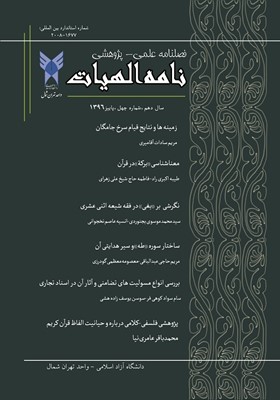-
-
List of Articles
-
Open Access Article
1 - Explain the jurisprudential and legal challenges of bank delay fines and provide solutions
Muhammad Hadi Mahdawi Ehsan Ali Akbari Babukani Jawad Edalatjoo -
Open Access Article
2 - The nature of the condition in the contract and its relationship with the validity and corruption of the contract from the perspective of contemporary jurists
Abd Al-Latif 'Alem Yunes Wahed Yarijan Sayyed Abulqasem Naqibi -
Open Access Article
3 - The nature of the Holy Spirit in Christian and Islamic mysticism
Jamshid Sarmastani alireza ebrahim -
Open Access Article
4 - The main methods of "strategic influence" of the enemy in the religious system From the perspective of Quranic teachings - narration
Mahdi Gorji Azandariani Maryam Haji Abd Al-Baqi Mahdi Eizadi Muhammad Hadi Homayun -
Open Access Article
5 - Existential realms and the relationship with the "self" in the Qur'an
BakhshAli Qanbari Mojgan Muhammadi -
Open Access Article
6 - The scope and limitations of arbitration in resolving disputes in Iranian law
Yasaman Saeidi Abd A-Reza Jamal Zadeh Ahmad Baqeri
-
The rights to this website are owned by the Raimag Press Management System.
Copyright © 2021-2025







